Blog
World Day for Health & Safety at Work: How conditions are steadily improving for miners, including at one DRC cobalt site
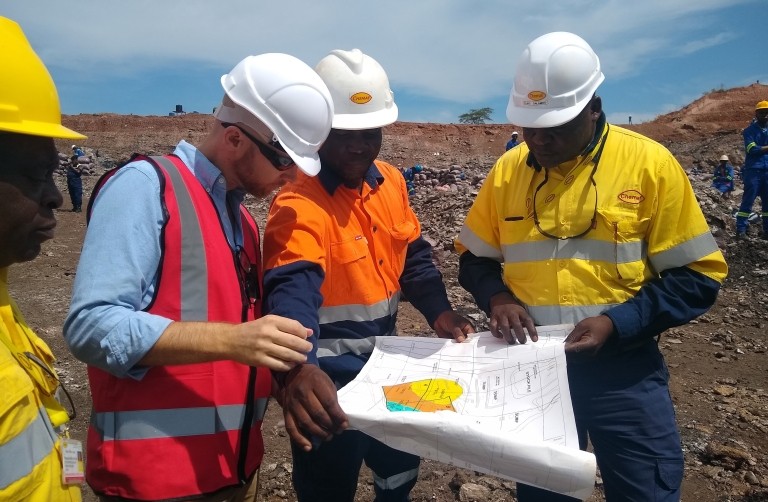
Mining provides a livelihood for millions of men and women around the world, many of whom have few other options for supporting their families. Pact’s Mines to Markets program uses an integrated, holistic approach to help resource-dependent communities improve their lives. Pact brings together government, industry and miners themselves to make artisanal and small-scale mining (ASM) formal, safer and more productive. In honor of World Day for Health and Safety at Work, we’re sharing some history of mining safety and insights from one particular project where Pact has contributed to dramatic improvements in health and safety outcomes for miners.
Health and safety in mining: From the bronze age to today
Mining is one of the world’s oldest industries, with evidence that our ancestors sought out copper, gold, silver and mercury in South Africa as early as 40,000 years ago. As society advanced, we became more and more dependent on minerals from the earth and began to look for these precious resources in increasingly difficult places, digging pits and galleries under the surface with little regard for the health and safety of those below. Injuries, fatalities and occupational health effects were common risks for early miners, with a few notable accidents resulting in hundreds of deaths in a single day and widespread chronic lung disease and hearing loss in later years for those lucky enough to survive a career in mining.
Various countries and the International Labor Organization began to introduce legislation and conventions in the 1900s to regulate mine operations and improve conditions for miners to protect their health and safety. In recent years, industrial mining companies have embraced risk management and zero-harm targets, bringing fatality and injury rates to levels below many other industries, such as construction, landscaping and agriculture, and saving countless workers from devasting injuries, life altering illnesses or death.

To achieve these dramatic reductions in injury, fatality and illness rates, many large mining companies use a risk identification and mitigation approach, underpinned by certification to internationally recognized standards like OSHAS18001 and incident investigations to determine the root cause of any accidents or near misses, no matter how minor, and implement corrective actions to prevent similar accidents from happening in the future.
Artisanal and small-scale mining: The new safety revolution
A significant portion of the world’s mineral resources are produced by large scale industrial mining operations, many of which use the methods described above to reduce health and safety risks for their workers and prevent accidents.
However, for certain commodities and in certain geographic areas, artisanal miners (AMs) make up a large portion of the sector, providing a vital livelihood directly to over 40 million people worldwide and tens of millions more family members and small business owners reliant on the sector for their income.
Many of these AMs work in dangerous conditions, with little support to manage health and safety risks, including:
- Badly constructed pits, shafts and tunnels prone to collapse and landslides, flooding and lack of ventilation
- Poor management of waste material leading to physical problems with waste dump, water contamination and health hazards including proliferation of disease (such as malaria) due to stagnant water sources
- Lack of Personal Protective Equipment or poor understanding of how to use it
- Health impacts of exposure to dust, noise, underground work and heavy, repetitive, physical labor
- Lack of potable water, latrines and sanitation, leading to gastrointestinal disease
- Physical risk of using inappropriate or poorly maintained equipment
- Use of hazardous materials
News of these risks has traveled, with academic research, journalistic investigations and NGO reports bringing the dangerous reality for many AMs to the public’s attention, with a particular emphasis on supply chains in the Democratic Republic of Congo (DRC) for cobalt, a key component in cell phone, electric vehicle and laptop batteries found few other places in the world.
A significant proportion of global cobalt production originates from ASM in the DRC, and while dangerous and sometimes illegal, it cannot be wished away. Small-scale cobalt mining in DRC provides an essential livelihood for some 200,000 people, and rather than ignoring the problem or shunning ASM, global commodities trader Trafigura chose to roll-up its sleeves and improve the situation by transforming working conditions and the lives of those impacted at the Mutoshi Cobalt Pilot Project in Kolwezi, DRC.
With the support of DRC authorities, and in a unique collaboration between concession-holders Chemaf, Trafigura, the ASM cooperative COMIAKOL and Pact, among others, semi-mechanized small-scale mining is occurring within the Mutoshi concession.
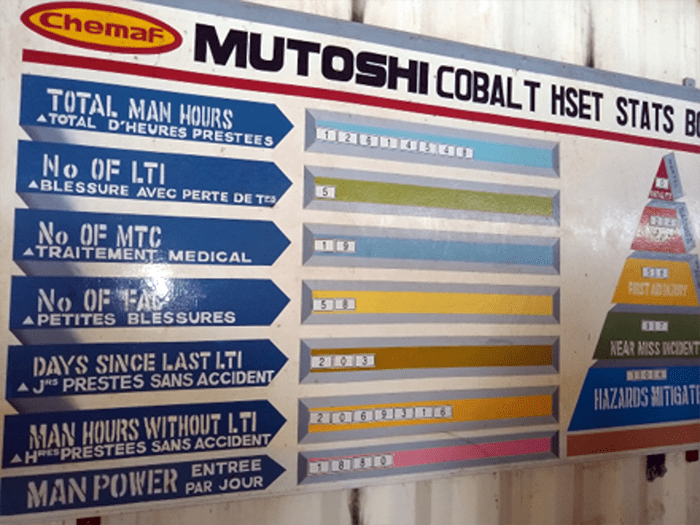
Through the project, participating members of COMIAKOL have been provided with a comprehensive package of assistance to increase their productive capacity and improve their working conditions. The package has included geological information (location of minerals), mechanized assistance (preparation and cleaning of the site), delivery of various forms of training, provision of safety equipment, and amenities such as sanitary facilities, healthcare, and more.
Expert identification and management of risks by Chemaf’s Health and Safety manager is combined with simple site rules to ensure a safe operating environment for AMs at Mutoshi. The site risk register is regularly updated to reflect changing conditions on the ground and a mixed team of AMs, Pact employees, government agents and experts from Chemaf conduct inspections multiple times per week to ensure compliance with site rules, train AMs on best practices and gather information.
Before formalization, the pits at Mutoshi looked like this one below, full of twists and turns, and up to 100 meters below the surface. The risks of cave-ins and landslides were very high, with an average of one fatality every three days during that time, according to reports from AMs working the site.
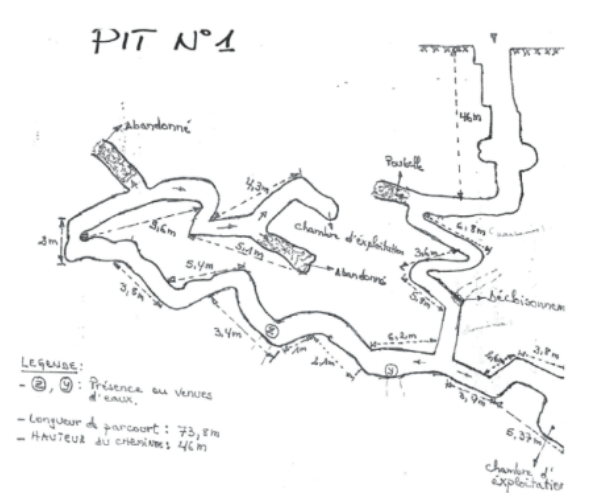
Since the project launched in April 2018, pit depths have been limited to 10 meters or less, and the vast majority of AMs work on the surface, mining out in the open with simple hand tools while wearing personal protective equipment. Access to the site is limited to COMIAKOL members, all of whom have been verified to be over 18 years old, and alcohol tests are conducted at random to prevent AMs from working under the influence. Free health care is also available on site, where a doctor treats small injuries and first aid needs as well as illnesses common in the region, such as malaria and diarrheal diseases.
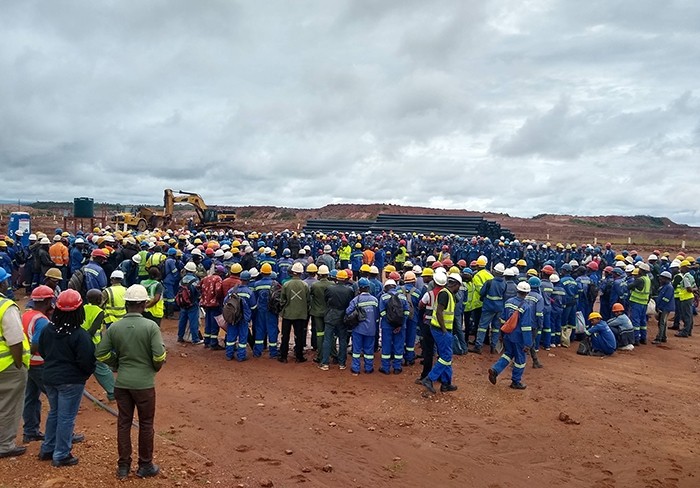
The cooperative management team holds a team meeting every Monday morning, where they reinforce key safety topics for the workers, from the importance of wearing steel-toe boots to how to prevent the spread of illnesses like cholera and Covid-19. Clean drinking water and sanitary facilities provided by Chemaf mean that the AMs can actually apply these important hygiene lessons on site and prevent disease outbreaks in this workplace.
COMIAKOL recently celebrated 6 million man hours without a fatality in the formalized part of the project site, earning recognition and praise from government officials in the province.
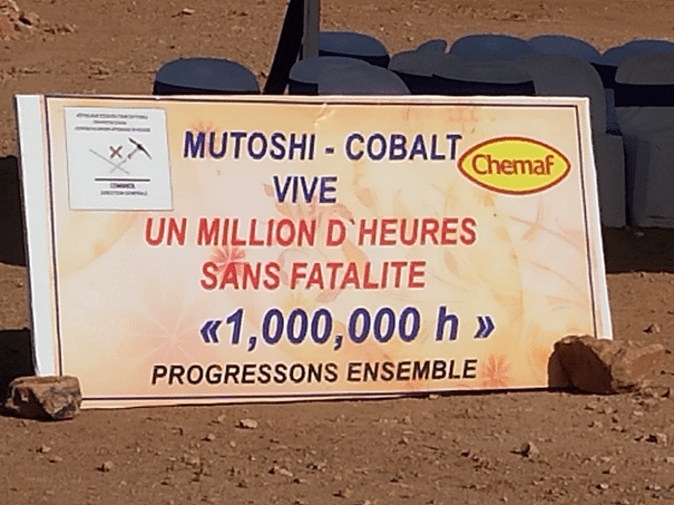
Lessons learned and suggested actions for other ASM operations
At Mutoshi, a unique partnership is what’s made these safety achievements possible, and it’s a model that Pact believes could succeed elsewhere. Each partner brings something different to the table.
Technical expertise: By working closely with large-scale mining experts from Chemaf, the operation has benefited from their extensive experience and continued guidance on identifying and managing safety risks. Chemaf also provides some of the resources necessary to manage safety, like machines to remove waste rock and open the pits to eliminate cave-in risks and medical professionals to educate and care for AMs.
High expectations and cross-sector experience: Trafigura holds the operation to high standards through their responsible ASM sourcing expectations and audits by Kumi Consulting, pushing COMIAKOL, Chemaf, Pact and SAEMAPE to improve conditions, mitigate risks and continuously improve. Representatives from the commodities trader also regularly visit the site and participate in bi-weekly management calls where safety risks are discussed, and proactive solutions proposed.
Strong political networks and on-the-ground action: SAEMAPE also provides technical guidance and ground-level monitoring, alongside Pact’s own employees, to train AMs and support compliance with Chemaf’s regulations and Trafigura’s expectations. This DRC government agency also provides a crucial link to regulators, ensuring that communication channels remain open and the project maintains its political license to operate.
Commitment to zero harm: Finally, COMIAKOL has integrated a zero-harm attitude into every aspect of its business, prioritizing safety training and practical management across its operations. From mineral diggers and washers to transporters and businessmen, every member of the cooperative undergoes a safety induction and is subject to the site’s regulations.